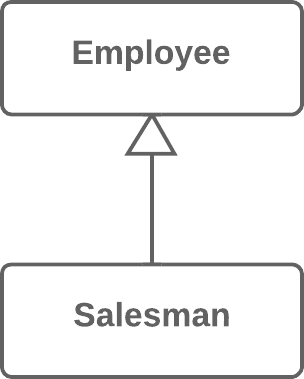Collapse Hierarchy
Problem
You have a class hierarchy in which a subclass is practically the same as its superclass.
Solution
Merge the subclass and superclass.


Why Refactor
Your program has grown over time and a subclass and superclass have become practically the same. A feature was removed from a subclass, a method was moved to the superclass... and now you have two look-alike classes.
Benefits
-
Program complexity is reduced. Fewer classes mean fewer things to keep straight in your head and fewer breakable moving parts to worry about during future code changes.
-
Navigating through your code is easier when methods are defined in one class early. You don’t need to comb through the entire hierarchy to find a particular method.
When Not to Use
-
Does the class hierarchy that you’re refactoring have more than one subclass? If so, after refactoring is complete, the remaining subclasses should become the inheritors of the class in which the hierarchy was collapsed.
-
But keep in mind that this can lead to violations of the Liskov substitution principle. For example, if your program emulates city transport networks and you accidentally collapse the
Transportsuperclass into theCarsubclass, then thePlaneclass may become the inheritor ofCar. Oops!
How to Refactor
-
Select which class is easier to remove: the superclass or its subclass.
-
Use Pull Up Field and Pull Up Method if you decide to get rid of the subclass. If you choose to eliminate the superclass, go for Push Down Field and Push Down Method.
-
Replace all uses of the class that you’re deleting with the class to which the fields and methods are to be migrated. Often this will be code for creating classes, variable and parameter typing, and documentation in code comments.
-
Delete the empty class.
 WYPRZEDAŻ ZIMOWA TRWA!
WYPRZEDAŻ ZIMOWA TRWA!
